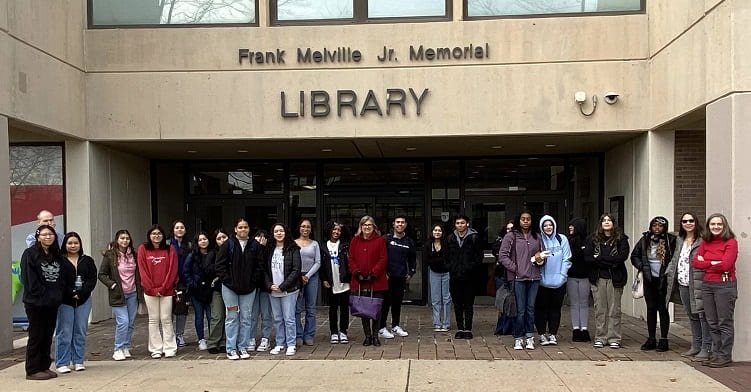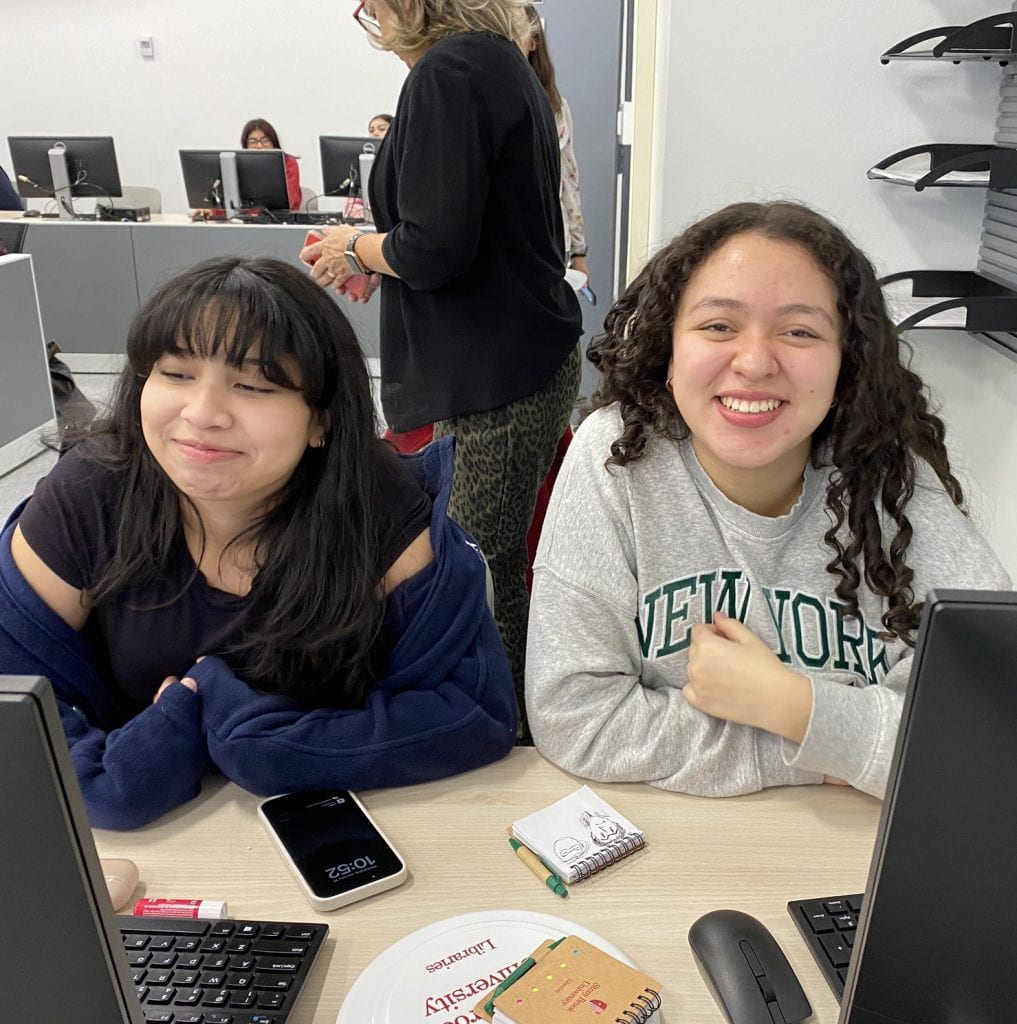When Laura Pombonyo was arranging to bring her Social Work class to SBU Libraries as part of our grant program, she had a specific focus in mind. Attending our retreat over the summer had left her with a lot of research-related ideas and concepts that she thought would be of value to her students. But what she landed on for their January visit was the concept of misinformation and disinformation. She wanted to give the students a deeper understanding of where news and information comes from and how it can be manipulated, presented for specific purposes, or flat-out wrong for a variety of reasons.

In planning the lesson, I found The News Literacy Project to be of great help. In particular, I used parts of their “Easiest Quiz of All Time” to get students thinking about facts, fact checking, and how you know something to be true. In real time they were allowed to use any resource to answer questions like filling in the blank for Darth Vader’s famous line: “______, I am your father.” There was some consternation when many of their preconceived notions turned out to be false, but the exercise reinforced how false information is easily disseminated and how it stubbornly persists in the general consciousness.

We moved on to a discussion of lateral reading and the value of looking for context and other information outside of the source itself. Another great planning resource, the Stanford History Education Group’s Civic Online Reasoning site provided an easy-to-understand video introduction to lateral reading. After that we dove into a number of pre-chosen scenarios taken from recent headlines and the students looked for sources to help confirm, deny, or find the latest information on a given story.
Another interesting layer I was able to introduce was that of deep fakes – videos and images manipulated so seamlessly that the damaging or absurd events they depict seem authentic. Examples from current news stories were not hard to find and while you always wish you had more time, I was able to introduce the concept and get some discussion going on not believing everything that you see online.
Serendipitously, Chat-GPT had just become a topic of debate in the world as I was planning for this class. Together, we looked at some of the early reactions to Chat-GPT and its potential impact on writing and education. Showing the students a Twitter thread from an academic who had found that the software would produce authentic looking yet fictitious article citations gave us a good segue into practicing looking up citations (some of which I faked) in library databases to find corroborating full text.
In the end, this turned out to be an engaging experience all around. The students got to grapple with some concepts that are not always covered in the high school curriculum (at least not yet!). The use of real world, current examples – some of which incorporated parody accounts as well – helped make the presentation more engaging and fun. And the fact that Laura had a clear subject matter in mind yet allowed us to design the day without binding it to a specific classroom assignment provided an opportunity to try a fresh approach on a current and vital issue.
